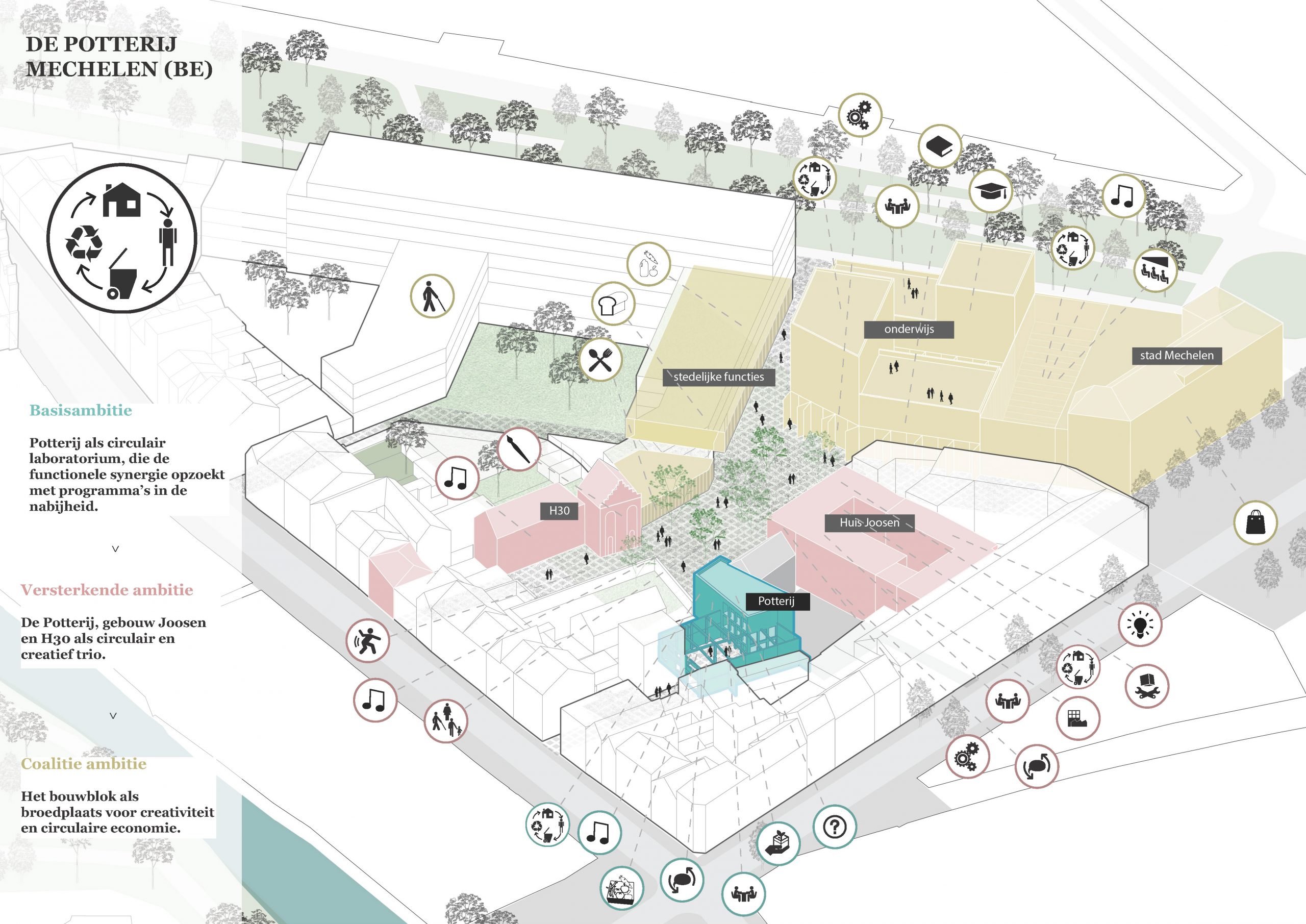From linear to circular economy
To fulfill global sustainability agreements, we are obliged to radically redraw our spatial model. We must seek a more sustainable way of organizing our economic growth. Ever more municipalities, cities and regions are making the transition to the circular economy and a sustainable urban policy. There is a growing awareness of the scarcity of natural resources and the rising pressure from complex social issues.
We assume that local production, closing circuits, joint ventures between economic actors, sustainable urban distribution, proximity of producer & consumer … will all play an essential part in the transition to a more sustainable circular economy. The reservation of active space in the proximity of consumers, workers and knowledge in the city will thus be important.
The central question that we must ask ourselves is whether the way ´environments´ work today in their current form suffices to host the economic transformations relating to the circular economy. And how they can be restructured so as to attract and make room for economic transformation.
Multidisciplinary expertise in socioeconomic and socio-spatial processes is of fundamental importance for this.
Conditions for resilient circular cities
BUUR supports higher authorities, cities and municipalities, developers and city-makers in the search for new forms of production and services and their integration into the spatial context.
The task is complex and demands multidisciplinary expertise. This involves not merely surface areas foreseen for circular activity, but also the creation of optimal urban conditions for, on the one hand, more efficient use of space by the current activity and, on the other, the attraction of new economic activities.
In a circular economy context, ´interweaving´, ´intensification´ and ´spatial output´ form key concepts for being able to create social added value.
In the transition to a circular economy we are looking both for quick wins and projects that can be started bottom-up, and for a step-by-step implementation of large-scale structures and hubs that create the conditions for resilient circular cities and regions. In an existing and built-up context, moreover, there is little room for setting up new physical networks. What is required is an integrated approach where the interweaving of different scale levels is of primary importance.











